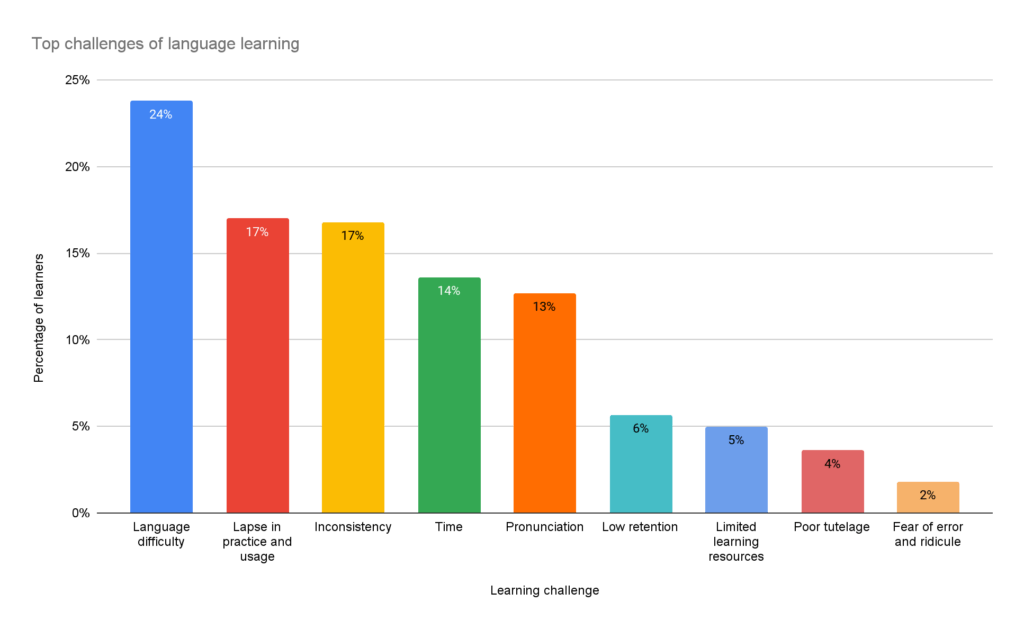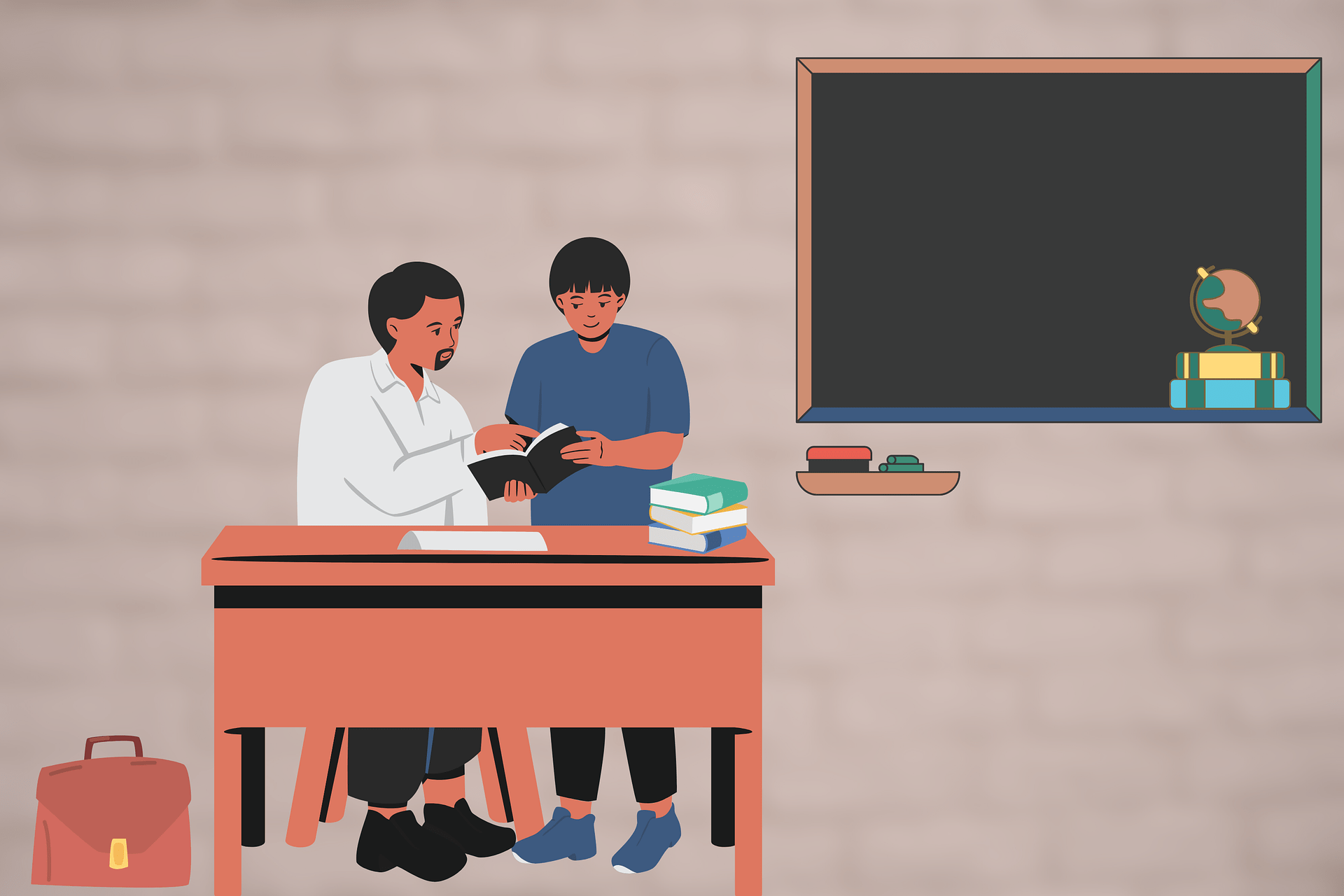Learning a second language isn’t always the rosy experience many learners envisage. Certainly, there’s an initial thrill of starting a language-learning journey. However, the challenges of learning a second language start to surface soon after the beginning phase. At this point, most learners opt for the easier path and give up on their learning altogether.
It doesn’t have to go that way, though. When you’re well-informed about the challenges of learning a new language, you can brace yourself up for the journey right from the start.
Why is second language learning more difficult?
Two main factors could make learning a second language more difficult. Both of these factors are associated with one’s first or primary language.
– Language Acquisition Device
The first reason concerns the difference between acquiring a language and learning it. Linguists explain that one’s primary language or mother tongue is acquired rather than learned, and this is attributed to a faculty called the Language Acquisition Device (LAD).
The LAD allows children below age 9 to start speaking a language just by hearing others speak it around them. Vocabulary and grammar rules don’t come first in this instance. Children are only concerned about communicating. Many times, they make up their own language rules, and as they get corrected by adult speakers, they fine-tune their language use. The whole language acquisition process is next to effortless.
Unfortunately, in adults, the LAD doesn’t work. Language learning takes the place of acquisition. Now, you must consciously learn your second language (if you only acquired one language as a kid), making it more complicated than the effortless process of acquiring your mother tongue.
– Language Interference
The second reason why learning a second language is more difficult is also tied to the first. Language interference is a phenomenon where the rules of one’s primary language conflict with the language rules of any new language in the mind. And this is partly due to the LAD.
The rules of the languages you acquire via the LAD become the reference point for any new language you want to learn. This means you will find languages with similar rules to your primary language easier to learn. Meanwhile, languages with contrasting sets of rules are more challenging to understand.
Language interference is the basis for language difficulty categorisations used to estimate language learning duration. You can read more about this in our article on how long it takes to learn a new language.
Top challenges of learning a second language
Now that we’ve discussed the reasons behind the challenges of learning a second language, we can examine the top aspects of language learning that learners find tricky. We’ll also propose solutions to these challenges.
The challenges on this list come from our survey of over 800 language learners. The chart below shows the percentage of survey participants that reported each of these difficulties.

We’ll briefly explain these nine learning challenges and how you can work through them in your learning journey. You can click the link to read more on our language use report.
1. Language difficulty
Unsurprisingly, at the top of our list of difficulties of learning a second language is a point on language difficulty. Remember our point on LAD and language interference? Language learners generally find new languages other than their acquired language challenging to understand. And the only solution to this is to accept the initial awkwardness as part of the learning process. Over time, you become more familiar with the language, and the sharp contrast with your primary language reduces to a bare minimum.
2. Lapse in practice and usage
Recall that for acquired languages, the learning method is constant exposure to the language speakers and the urge for kids to communicate. However, practice and usage take a backseat to learning language rules in language learning. With this, mastering a new language requires more conscious effort.
The obvious solution is to focus on practising your new language as you learn. Seize every opportunity to speak, hear, read, and write in your new language, regardless of how awkward it feels.
3. Inconsistency
When the going gets tough, the default response of most language learners is to abandon the challenge. And understandably so. However, language learning becomes more complicated when it’s on and off. Instead, you can pace your learning by practising the easier bits of the language repeatedly. This sets a good foundation for understanding the more challenging aspects of the language. And more importantly, it helps you stay consistent.
4. Time
Usually, learners complain about time because they are unable to fit language learning into their daily schedule. This is because many people think they must block out hours to learn. While that is true for language classes, it’s not for language practice. You can speak, read, or listen to content in the language on the go. Also, with a standard language class like we have at PLI, you can factor it into your weekly schedule and plan your other activities accordingly.
5. Pronunciation
Pronunciations can be tricky. And there’s no getting around them as they are part of any language. The challenge with pronunciation is that you can’t eliminate the accent from your mother tongue. So, patience in learning is the only solution here.
6. Low retention
Retention of words, meanings, pronunciations, sentence structures, and grammar rules is essential to learning a second language. A lot of language learners struggle with this at the beginning. The antidote to this is to be patient and to stay consistent with learning. Soon, the words that you can’t place will become second nature.
7. Limited learning resources
This doesn’t apply to all languages, only to minority languages. And it’s often hard to solve this problem as it might involve creating resources from scratch. What you can do to work through this is to find a native-speaking language teacher who can guide you in finding valuable learning materials.
Are you interested in getting a native-speaking language tutor? We can help. Click here to contact Prepmewell Language Institute to find expert language tutors.
8. Poor tutelage
Your language tutor can affect how difficult learning a second language becomes for you. However, with professional help from PLI, you can rest assured that your language learning is in the best hands.
9. Fear of error and ridicule
Learning a new language is a marathon, not a sprint. Making mistakes is part of learning, so you need to own it. Sure enough, there would be native speakers who make fun of your language use. Don’t be too bothered about them. Instead, focus on their corrections to your language use and keep learning. Soon enough, you’d be able to speak more coherently and confidently.
Conclusion
Now that you’ve seen that the challenges of learning a second language all come with applicable solutions. It means you’re back in the driver’s seat. You can dictate how you want your language-learning journey to go. Choose a relatable and immersive learning method that puts language practice first, and you’ll make considerable progress over time.
